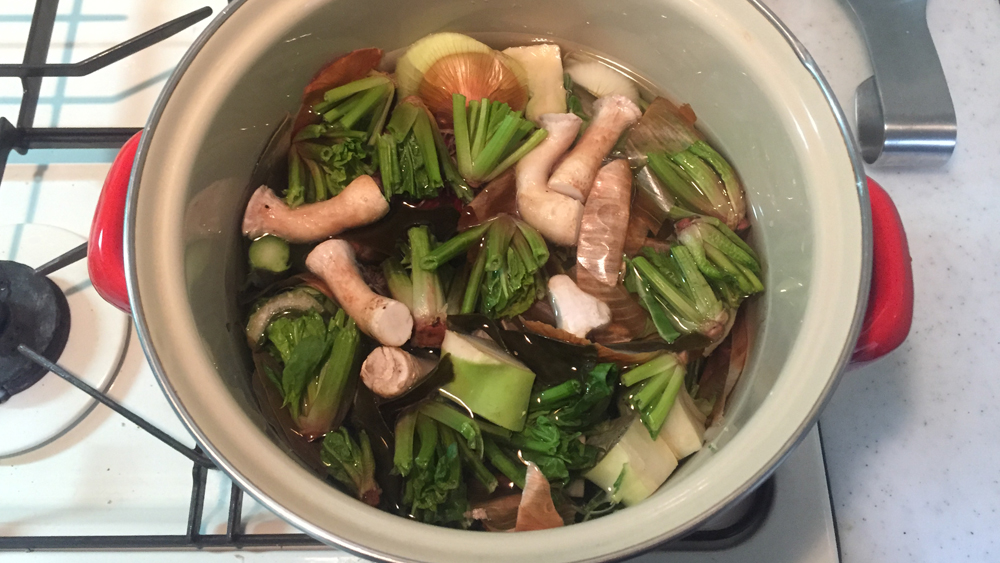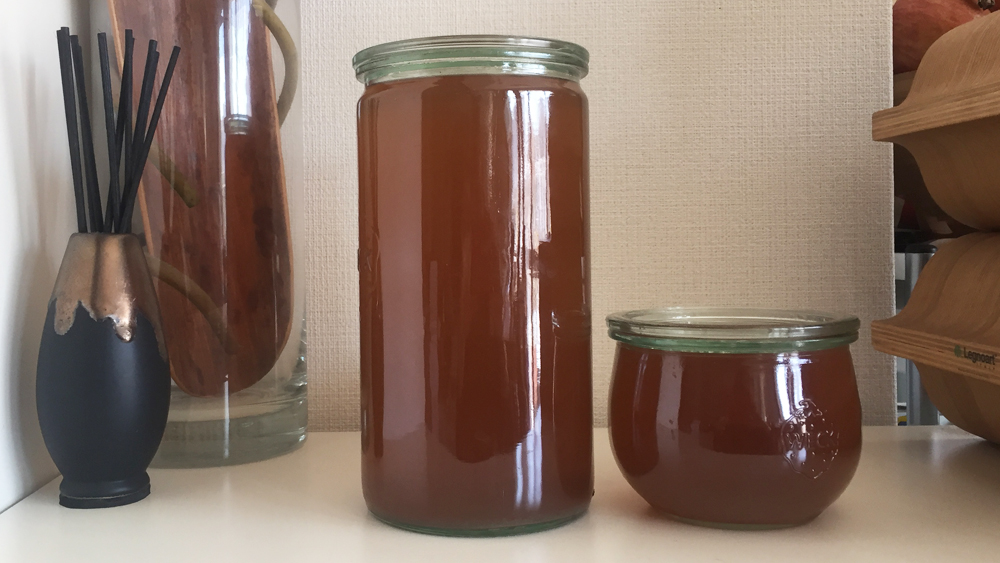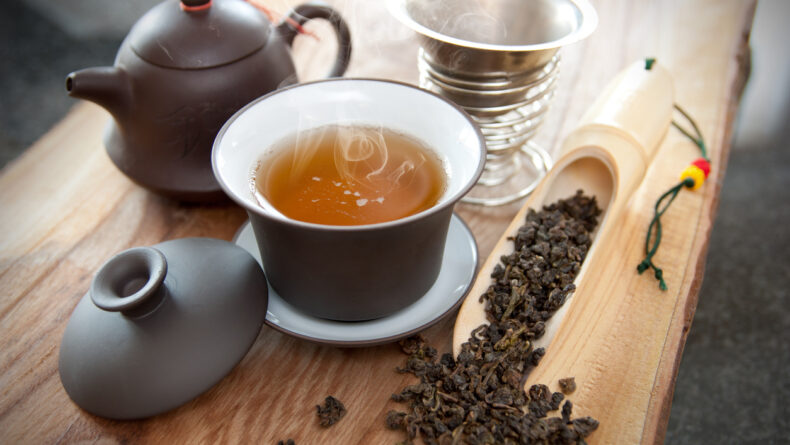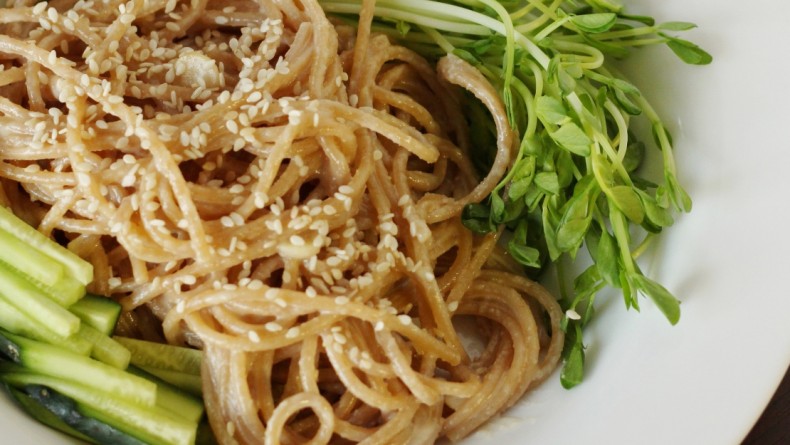Japanese Style Homemade Vegetable Stock
A Warm Nutrition Boost
Stocks and broths are a bit of an enigma in that they are incredibly easy and inexpensive to make, and yet most people don't realize this and therefore end up buying commercial types.
As with many things in supermarkets today, store bought stock is often crammed full of chemicals, high in sodium, and has various other attributes that are generally considered to be not great for your health. Do a favor to your body, your wallet and the environment by making your own. The easiest place to start is with a simple vegetable stock, with a bit of Japanese influence thrown in for extra flavor and nutrients.

The great thing about making your own stock is that you’re using up ingredients that otherwise would have landed in the trash, so it’s essentially free. What’s even better about vegetable stock is that it is much faster to make than animal-based stocks and broths, which require boiling the bones for several hours or more.
What To Do
Let me be clear about one thing: there is absolutely no need to buy any ingredients in order to make your own stock. I keep a bowl in the fridge, and throughout the week I add to that bowl raw vegetable scraps that weren’t used in meals. These include shiitake stems, onion ends and peels, carrot ends, spinach and kale stems (the very bottom part and the hard veins that you don’t eat), broccoli stalks (if whatever I’m making only uses the florets), the green tops of leeks, the white bottoms of celery, the big bulbs of bok choy, and various other odds and ends. There are very few rules here, except don’t include things you wouldn’t normally cook (like cucumber and salad greens, which will just turn to slimy mush), and make sure everything is well washed and roughly chopped before tossing it into the bowl.
Once the bowl has filled up at the end of the week, empty the contents into a large stockpot (checking as you do so to make sure that nothing has gone moldy while in the fridge) and cover with clean, cold water. Toss in a couple of bay leaves and—here comes the Japanese part—a sheet of kombu kelp, torn into strips. Both of these last things are optional, but the bay leaves will help deepen the flavor, and the kombu imparts lots of great additional nutrients. I never salt my stock and I rarely season it because I prefer to do that when I use it later, but if you wish you can add sprigs of fresh herbs (such as parsley, thyme and sage) and/or a teaspoon of whole peppercorns.
Place the pot on the stove over high heat and bring it to a boil. Lower the flame and simmer it uncovered, stirring occasionally, for roughly an hour. Both the amount of water you use and the amount of time you cook it will affect how dark the stock comes out. I tend to make mine quite concentrated so that it takes up less space in the fridge. I can always dilute it with a little water when I use it.

Once the stock has been simmering away for about an hour and has reached the nice amber color you are aiming for, turn off the flame and allow it to cool a bit. Use a slotted spoon to remove the large chunks of cooked vegetables from the pot (save these to be composted; more on that later), then pour it through a mesh strainer into glass jars (for very clean, debris-free stock, line your strainer with coffee filters—this is especially a good idea if you have added peppercorns). Allow to cool before storing in the fridge. Ta-da! You now have delicious, homemade vegetable stock to use throughout the week until it’s time to make more.
How To Use It
There are plenty of uses for homemade stock, and I am always discovering new ones. Soups are the obvious choice (try this carrot ginger miso one to warm you up on a cold night), but you can also use it to cook beans, grains and pseudocereals, such as rice and quinoa. Your sides will no longer be bland and flavorless, and you’ll also get an extra nutrition boost.
Homemade vegetable stock makes a great base for stews and curries, gives additional flavor to risotto and pasta sauces, and can even be used in smoothies in place of water (I promise you won’t even taste it if you also add a sweet fruit like apple or banana). The possibilities are endless. But if for some reason you don’t use up one batch before it’s time to make another, you can always pour it onto your potted plants as a natural fertilizer.
Do you have any other creative ideas for using homemade vegetable stock? Let us know in the comments!

















